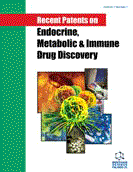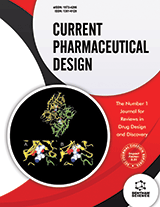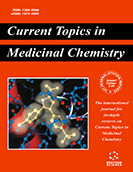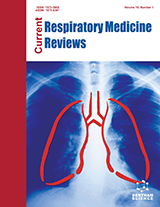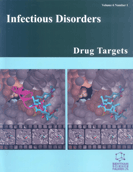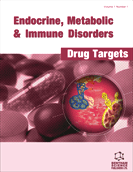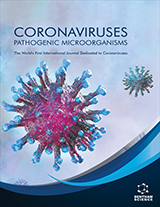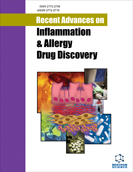Abstract
Obesity is currently one of the greatest health problems in industrialized countries, and yet there is no reliable method to fight this pandemic. Bariatric surgery is the most effective method to reduce body weight in morbidly obese patients, suggesting that gastrointestinal tract derived signals are crucial for energy balance regulation. This would indicate that homeostatic mechanisms responsible for body weight maintenance, involving the brain-gut axis are critical for obesity prevention and development. Several descriptive studies have proven the presence of gastric endogenous systems that modulate energetic balance (ghrelin - obestatin system and endocannabinoid system); however, these systems and their interactions are still not well known. The present review describes recent investigations that support the role of the stomach as an energy balance regulator which exerts its effects over known and probably unknown gastrointestinal systems. Additionally, information covering new gastrointestinal derived peptides patents for obesity treatment is provided as well.
Keywords: Stomach, myenteric plexus, ghrelin, tease feeding, CCK, GLP-1, PYY (3-36)
Recent Patents on Endocrine, Metabolic & Immune Drug Discovery (Discontinued)
Title: The Stomach as an Energy Homeostasis Regulating Center. An Approach for Obesity
Volume: 4 Issue: 1
Author(s): Omar Al-Massadi, Maria Pardo, Felipe F. Casanueva and Luisa M. Seoane
Affiliation:
Keywords: Stomach, myenteric plexus, ghrelin, tease feeding, CCK, GLP-1, PYY (3-36)
Abstract: Obesity is currently one of the greatest health problems in industrialized countries, and yet there is no reliable method to fight this pandemic. Bariatric surgery is the most effective method to reduce body weight in morbidly obese patients, suggesting that gastrointestinal tract derived signals are crucial for energy balance regulation. This would indicate that homeostatic mechanisms responsible for body weight maintenance, involving the brain-gut axis are critical for obesity prevention and development. Several descriptive studies have proven the presence of gastric endogenous systems that modulate energetic balance (ghrelin - obestatin system and endocannabinoid system); however, these systems and their interactions are still not well known. The present review describes recent investigations that support the role of the stomach as an energy balance regulator which exerts its effects over known and probably unknown gastrointestinal systems. Additionally, information covering new gastrointestinal derived peptides patents for obesity treatment is provided as well.
Export Options
About this article
Cite this article as:
Al-Massadi Omar, Pardo Maria, Casanueva F. Felipe and Seoane M. Luisa, The Stomach as an Energy Homeostasis Regulating Center. An Approach for Obesity, Recent Patents on Endocrine, Metabolic & Immune Drug Discovery (Discontinued) 2010; 4 (1) . https://dx.doi.org/10.2174/187221410790226729
| DOI https://dx.doi.org/10.2174/187221410790226729 |
Print ISSN 1872-2148 |
| Publisher Name Bentham Science Publisher |
Online ISSN 2212-3334 |
 13
13Related Articles
-
Molecular Characterization of the Hetero-Assembly of β-Amyloid Peptide with Islet Amyloid Polypeptide
Current Pharmaceutical Design Genes, Environment, Intermediate Phenotypes, and the Pathogenesis of Diabetic Nephropathy
Current Pharmacogenomics The NPC1L1 Inhibitor Ezetimibe in the Treatment of the Dyslipidemia in Patients Affected by the Metabolic Syndrome: Evidences and Perspectives
Current Enzyme Inhibition Reactive Oxygen Species: Physiological Roles in the Regulation of Vascular Cells
Current Molecular Medicine Viral Myocarditis and Dilated Cardiomyopathy: Etiology and Pathogenesis
Current Pharmaceutical Design Circadian Rhythm of Blood Pressure in Diabetes Mellitus: Evidence, Mechanisms and Implications
Current Diabetes Reviews Psychotropics and Fertility
Current Women`s Health Reviews Serum Hepcidin, the Hepcidin/Ferritin Ratio and the Risk of Type 2 Diabetes: A Systematic Review and Meta-Analysis
Current Medicinal Chemistry Role of Nitrosative Stress and Peroxynitrite in the Pathogenesis of Diabetic Complications. Emerging New Therapeutical Strategies
Current Medicinal Chemistry Withdrawal Notice: Reconnoitering the Role of Endothelin in Obesity
Current Pharmaceutical Design Preface
Current Nutrition & Food Science Microvascular Complications of Type 2 Diabetes Mellitus
Current Vascular Pharmacology Sodium Intake, Circulating Microvesicles and Cardiovascular Outcomes in Type 2 Diabetes
Current Diabetes Reviews The Study on the Active Ingredients and Potential Targets of Rice Bran Petroleum Ether Extracts for Treating Diabetes Based on Network Pharmacology
Combinatorial Chemistry & High Throughput Screening Dendrimer-Based Contrast Agents for Molecular Imaging
Current Topics in Medicinal Chemistry Low Molecular Weight and Oligomeric Chitosans and Their Bioactivities
Current Topics in Medicinal Chemistry Dietary Polyphenols in the Intervention of Gestational Diabetes
Current Traditional Medicine The Effects and Underlying Mechanisms of Cell Therapy on Blood-Brain Barrier Integrity After Ischemic Stroke
Current Neuropharmacology Hepatocellular Carcinoma and Non-Alcoholic Fatty Liver Disease: From a Clinical to a Molecular Association
Current Pharmaceutical Design Vitamin D-Binding Protein Acts in the Actin Scavenge System and Can Have Increased Expression During Aspirin Therapy
Current Neurovascular Research


